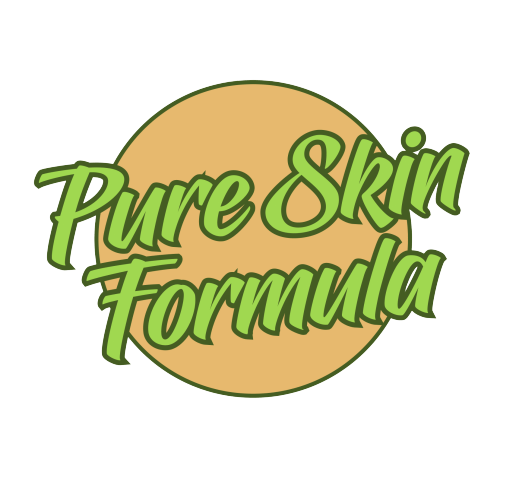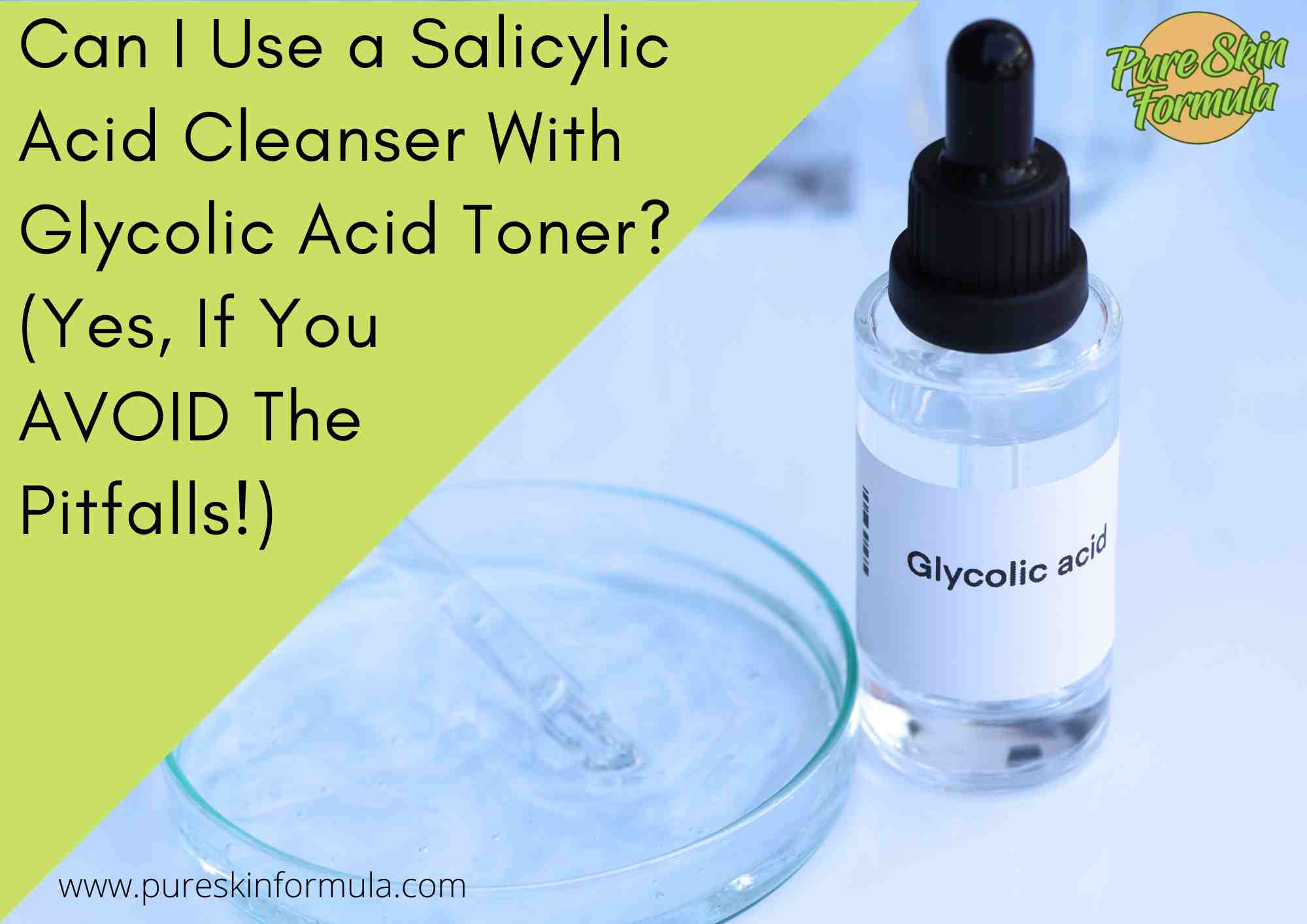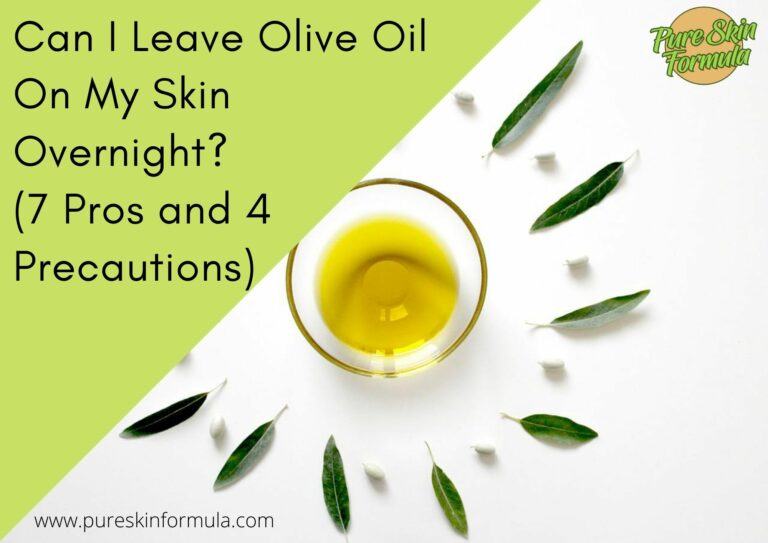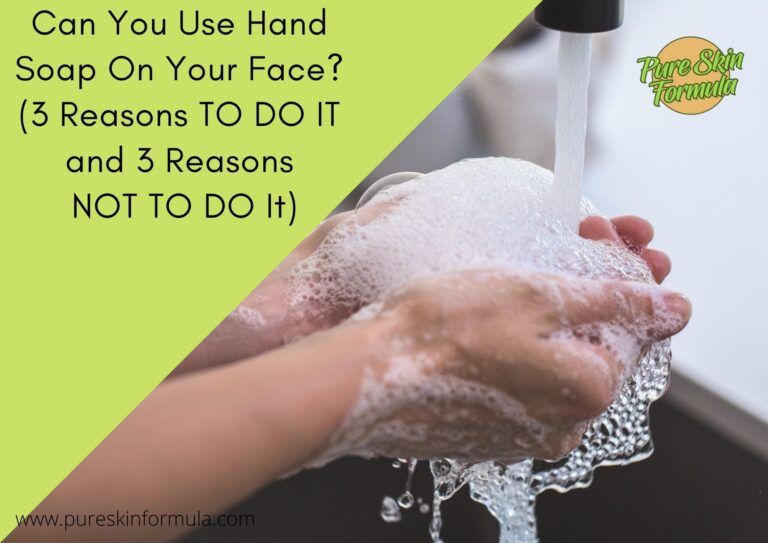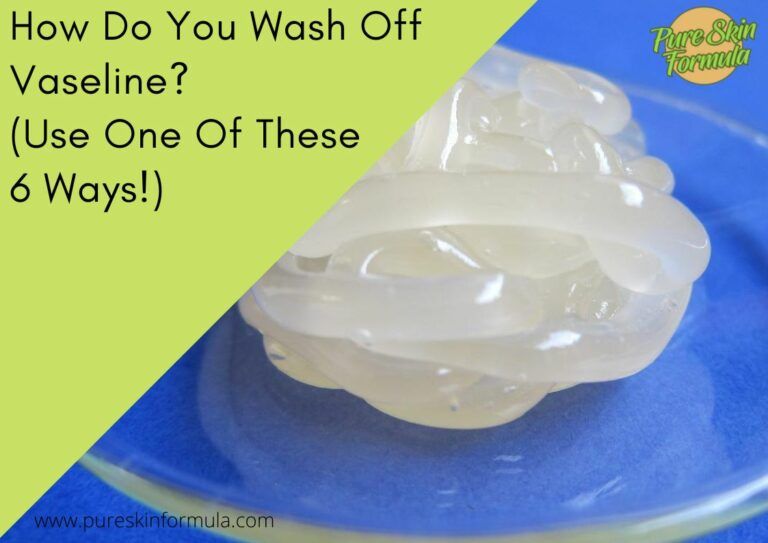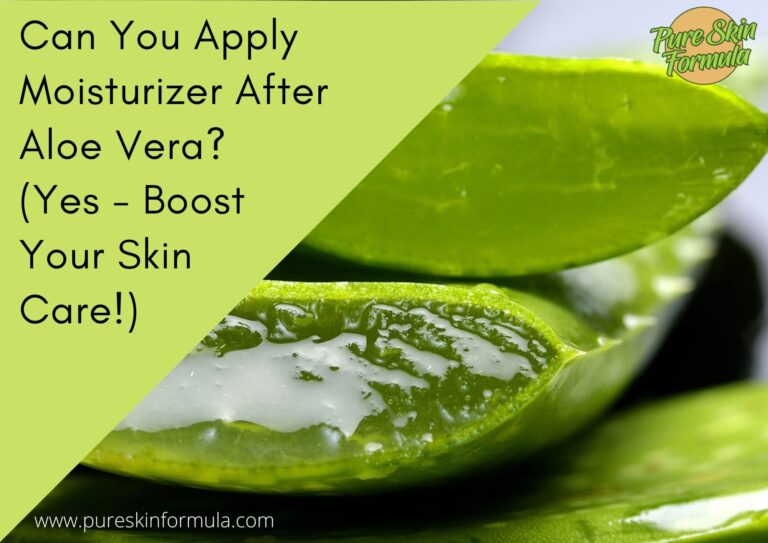I will kick things off by getting you acquainted with two blockbuster ingredients in the skincare world: salicylic acid and glycolic acid.
Can I use a salicylic acid cleanser with glycolic acid toner?
Yes, you can use a salicylic acid cleanser with a glycolic acid toner, but it’s essential to proceed with caution due to potential skin sensitivity. Both acids exfoliate, promoting skin cell turnover and addressing acne and uneven texture.
However, combining them may increase the risk of irritation, especially for sensitive skin types. Start with a patch test and introduce them gradually into your skincare routine, alternating days or using them at different times to minimize potential irritation.
Also, always moisturize and wear sunscreen during the day when using exfoliating acids.
Let’s dig deeper into the topic.
A detailed look at the two ingredients
Salicylic acid, a beta-hydroxy acid (BHA), is a real game changer for anyone dealing with acne. It’s oil soluble, which means it can get down into the pores to do its work, clearing out the buildup of dead skin cells and sebum that can lead to pimples and blackheads.
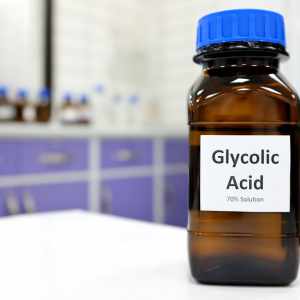
Glycolic acid is the star player from the alpha-hydroxy acid (AHA) team. Thanks to its ability to exfoliate the skin’s surface and promote cellular turnover, it doesn’t shy away from the spotlight. This isn’t just about getting rid of the old, worn-out skin cells; it’s also about revealing a brighter, more even complexion underneath.
Let’s emphasize how these acids tackle different layers of your skin. Salicylic acid goes deep, targeting the inner linings of your pores, and it’s this quality that makes it so effective for oily and acne-prone skin types.
Glycolic acid, on the other hand, works its magic on the surface, sloughing off dead cells and smoothing out fine lines and wrinkles in the process.
We must also consider the pH levels because that’s how these acids thrive. A lower pH means a more acidic product, and the pH can make or break the effectiveness of acid-based skincare. Most salicylic acid cleansers and glycolic acid toners are carefully formulated for optimal pH, allowing them to work best.
Are salicylic acid cleansers and glycolic acid toners compatible?
Navigating the world of skincare acids can be tricky, especially when combining them effectively. Salicylic and glycolic acids are like a dynamic duo for your skin, each bringing unique benefits.
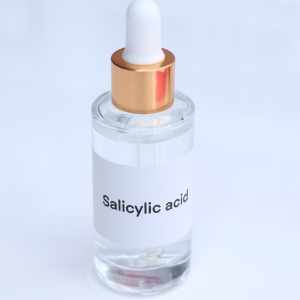
Salicylic acid keeps the blemishes at bay by exfoliating the skin internally. Glycolic acid, on the other hand, is a master of the surface, sweeping away dead cells for a brighter complexion. When used together, they can potentially offer a comprehensive exfoliation.
But how well do these acids play together? Your skin’s tolerance is key. For some, alternating between a salicylic acid cleanser and a glycolic acid toner can lead to clearer, more radiant skin. Yet the combination can be too harsh for others, leading to irritation.
My suggestion? Start slow. If you want to amp up your skincare game by combining a salicylic acid cleanser with a glycolic acid toner, keep an eye on how your skin reacts.
If you’re doing it right, no burning, itching, or peeling should occur. There’s nothing wrong with playing it safe and talking to a dermatologist for personalized advice.
This isn’t just about piling on powerful ingredients; it’s also about maintaining harmony on your skin. Balancing these acids ensures you reap the benefits without tipping over to irritation. Using them in the correct order (cleanser first, toner second) and at the right times (possibly not both in the same routine) will set your skin up for success.
How to safely incorporate both acids into your skincare routine?
Start by using the salicylic acid cleanser just a few times a week. This allows your skin to get used to the acid without overwhelming it. Also, opt for a low concentration to begin with, especially if you’re new to chemical exfoliants.
Next up, let’s talk glycolic acid. Gradually introduce the glycolic acid toner after your skin has adjusted to the cleanser. Using it every other night can help your skin build tolerance over time. And again, checking for products with a lower acid concentration can be smart.

The key here is balance. You’re looking for the right amount of exfoliation without crossing the line into irritation territory. For that, keep the rest of your skincare routine gentle and hydrating.
Another important point is the patch test. It’s a simple skin test, but it can prevent unnecessary discomfort. Just apply a small amount of the product on a discrete area and wait 24 hours to ensure there’s no adverse reaction.
On the other hand, if you start noticing signs of irritation, such as redness, peeling, or a burning sensation, take a step back. It’s perfectly fine to temporarily reduce the frequency or eliminate one of the acids from your routine.
Choosing products with soothing ingredients like aloe vera or niacinamide can support your skin’s barrier and reduce potential irritation. Integration of these acids should always feel comfortable and beneficial, not punishing. Treat your skin like the sensitive, responsive organ it is.
You can always adjust your approach, but starting on the right foot will make a big difference. It boils down to listening to your skin and adjusting as needed.
Addressing common concerns and questions
Combining powerful ingredients like salicylic and glycolic acids can raise eyebrows and many questions. Don’t worry; it’s normal to be cautious. You want to ensure you’re treating your skin right. So, let’s tackle some of your most common concerns.

First off, over-exfoliation isn’t a myth. It’s a real risk that can lead to sensitivity, dryness, and irritation. It might be time to scale back on the acids if your skin feels tight, red, or flaky. And don’t just slather on more moisturizer as a quick fix. Your skin needs time to heal, so give it a break if needed.
Now, about acid burns – these are no joke. They can happen when products are too strong, used too frequently, or left on the skin for too long. Stick to the recommended usage instructions and pay close attention to how your skin responds.
When it comes to irritated skin, it doesn’t always mean you have to ditch the acids altogether. Sometimes, all you need is to adjust the frequency or concentration of your products. But if irritation persists, it’s a clear sign to stop and consult a dermatologist.
It’s better to err on the side of caution. If your skin reacts negatively, pause and reassess your approach. It’s not just about how these products can enhance your skin but also how to use them responsibly to avoid complications.
Lastly, I encourage you to bombard your dermatologist with questions. They’ve heard it all, and their insights can save your skin from much guesswork and potential mishaps. So go ahead and get the information you need straight from the experts.
Conclusion
The synergy of a salicylic acid cleanser and glycolic acid toner presents a promising solution for addressing acne and uneven skin texture. However, it’s imperative to tread carefully due to the potential for increased skin sensitivity when combining these potent exfoliants.
Adopting a cautious approach by conducting patch tests and gradually integrating them into your skincare routine can help mitigate any adverse reactions.
Furthermore, prioritizing adequate moisturization and diligent sun protection is paramount to safeguarding your skin’s health and maximizing the benefits of these exfoliating acids. With proper care and attention, you can achieve clearer, smoother skin.
Thank you for reading!
Valeria
